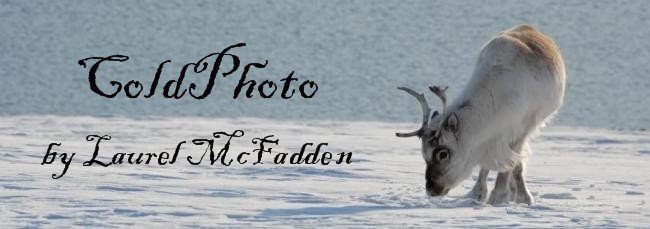For not updating recently, I apologize to everyone who uses this website to make sure I am still alive. As my host father in Greenland recently wrote,
"Therecie says I have to tell you she is afraid some polar bear have done something with you, like we do with chewinggum."
I suppose the problem stems from a variety of factors: significant issues with photography, dealing with the logistics of my position here, and a multitude of social stresses. Photography in this dark period is simply disheartening. Indoor photos are not my forte, and outdoor photos just turn out just ugly. I'm working on it...temperatures here recently have been a bit colder, mainly due to the wind. Taking out my camera means the camera freezes, and while I'm willing to push it to some limit, it feels like "how cold is too cold for a baby?" Not a line you want to dance.
But to appease us all, here's a few.
My dorm:

Part of an old coal transport system:

The town school:


We are indeed getting some light these days, a blue twilight on the horizon from about 11-1. Back in Ittoqqortoormiit, the school recently celebrated the return of the sun...they're a bit more south that I am now. If you're interested, go here and click on the photo under "Solen er tilbage" to see some of my kids in the celebration.
These photos bring back a lot of memories of being in Greenland. A month ago seems forever but so short, and in all the craziness of the holidays, the injuries and airline adventures, seeing these faces again suddenly reminds me of that impossible place. My host father keeps me updated on the family and sends me photos - Duka had puppies!

And apparently Benjamin has grown exponentially. That puppy's name is "Nuunu", or "cute little one" in Greenlandic.
Another, because I know you want to see it:

I also got a very nice email from one of my 8th grade students. I now have some proof that they didn't completely dislike me.
Soooo...what exactly am I doing here. I'm going to get all biological here, so hang on. I'm working in the lab of one of the marine biology professors at UNIS, a Norwegian named Jorgen Berge. Along with his PhD, Masters, and bachelors students (all fine people), we're currently working on a project studying amphipods in the nearby Adventfjorden, and further north in Riipfjorden. Observe:

For your convenience, I've also circled Longyearbyen and Hornsund Fjord in red. (Longyearbyen is where I live now, Hornsund Fjord is where I worked with the little auks in 2005 at the Polish Polar Station.) Essentially, my work involves measuring the amphipods and identifying their gender (remarkably difficult), to compile data that will give us insight into the ecology of three species of Arctic amphipods.
Exciting news! In about a week we're taking a Norwegian coast guard ship up to Ripfjorden to do more sampling, and I get to go! We'll be gone for about 5 days, and I'll get to hit probably my most northern point on this year - around 80 degrees north.
This is also a conveniently firm date by which my foot WILL be better, because I say so. I'm no longer using the cane, so things are certainly...bonding, or whatever bones do.
What's an amphipod? Technically, a weird alien shrimpy thing:

That's the biggest of the three species, in front of millimeter paper. Most of the ones we look at are about a centimeter long.
However, I am also working for a visiting Polish professor, Piotr Kuklinski. For him, I'm doing the sampling work for a project looking at bryozoan colonization in Adventfjorden. Essentially, I stand on a freezing icy dock lowering panels into the water, pick them up a week later, and identify everything I see growing on the panels. Somewhat associated to this project, if you want more reading.
I suspect a number of you don't know what bryozoans are either. Think barnacles, wormy things, and...other weird stuff.
OR, you could say, "Bryozoans, sometimes referred to as moss animals or ectoprocts are tiny, colonial organisms. Their development does not follow either a true protostome or true deuterostome pattern. They, along with the Phoronids (worm-like animals) and the Brachiopods (bivalve-like animals sometimes referred to as lampshells) are thus classified based on the presence of a specialized feeding structure called a lophophore, an extension of the body wall into a tentacled structure that surrounds the mouth and is either horseshoe-shaped or circular. Bryozoan colonies can be encrusting, arborescent (branching, and tree-like), or even free living. Individuals within colonies may be referred to as either zooids, or polypides. The term polypide refers to the contents of each zooid (gut, lophophore, muscles, etc.) within the body wall." Thank you, Smithsonian Marine Station.
Finally, plans are go for me to...start to plan to think about living in Cherskii this May. I'll be working with the Northeast Science Station in Cherskii, Siberia. Have a look. Turns out its in a boundary region, so in addition to a visa I need other special permits. Wish me luck.
And because I have nothing better to do at the moment, a full-Arctic look at the major stops on this year trip. Please understand that the lines have nothing whatsoever to do with flight patterns, and don't include about 90% of my actual landings, but merely shows my major points above the Arctic Circle.

Russia's kind of ridiculously huge, if you think about it.
Mmyess, and if you want to know how cold it is here, go to the UNIS website, click on Weather, then click on the Gruvefjellet station. It's the closest one to Longyearbyen, and updates every hour. Americans, remember 32F = 0C, 0F = -18C, approximately, and so on.













































